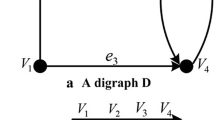Abstract
Good mechanical designs are often composed of highly integrated, tightly coupled components in which the interactions among the components are essential to the function and economic execution of the design. This assertion runs counter to design methodologies in other engineering fields, such as software design and circuit design, that advocate designs in which each component fulfills a single function with minimal interaction. Because of the geometry, weight, and cost of mechanical components, converting a single functional requirement into a single component is usually not practical. Each component may contribute to the performance of more than one function, and the performance of each function may be distributed over many components. In fact, most mechanical components perform not only the desired function, but also have many additional, unintended behaviors. In good mechanical designs, these additional behaviors often are exploited.
We describe a synthesis strategy to utilize these behaviors by transforming design specifications in a function-preserving manner to obtain function structures which correspond closely to collections of available components. This strategy is elaborated in the context of simple gearbox design.
We feel that design strategies derived from characteristics of good designs will foster improved design practice and facilitate the development of computer-based assistance to the designer.
Similar content being viewed by others
References
Mostow, J., “Toward Better Models of the Design Process,”The AI Magazine, Spring 1985
Rinderle, J.R. and Suh, N.P., “Measures of Functional Coupling in Design,”ASME Journal of Engineering for Industry, Vol. 104, 1982, pp. 383–388
Steinberg, L, Langrana, N., Mitchell, T., Mostow, J. and Tong, C., “A Domain Independent Model of Knowledge-Based Design,” Technical Report AI/VLSI Project Working Paper No. 33, Rutgers University, 1986
Wirth, N., “Program Development by Stepwise Refinement,”Communications of the ACM, Vol. 14, No. 4, April 1971, pp. 221–227
Fenves, S.J. and Baker, N.C.,Spatial and Functional Representation Language for Structural Design, Elsevier Science (North-Holland), IFIP 5.2 1987
Rinderle, J.R., “Implications of Function-Form-Fabrication Relations on Design Decomposition Strategies,”Computers in Engineering, 1986 Gupta, G., ed., American Society of Mechanical Engineers, New York, 1986, pp. 193–198
Ulrich, K. and Seering, W., “Functional Sharing in Mechanical Design,”AAAI-88, 7th Natl. Conf. on Artificial Intelligence, St. Paul, MN, 1988, pp. 342–347
Suh, N.P., Bell, A.C. and Gossard, D.C, “On an Axiomatic Approach to Manufacturing and Manufacturing Systems,”ASME Journal of Engineering for Industry, Vol. 100, No. 2, 1978
Maher, M.L., “HI-RISE and Beyond: Directions for Expert Systems in Design,”Computer-Aided Design, Vol. 17, 1985, pp. 420–427
Brown, D. and Chandrasekaran, B., “Expert Systems for a Class of Mechanical Design Activity,”Knowledge Engineering in Computer-Aided Design, Gero, J., ed., North-Holland, 1985, pp. 259–290
Marcus, S., Stout, J. and McDermott, J., “VT: An Expert Elevator Designer That Uses Knowledge-Based Backtracking,” Department of Computer Science Technical Report CMU-CS-86-169, Carnegie-Mellon University, 1986
Colburn, E.R., “Abstracting Design Relations,” Internal Lab Report, CMU-MEDL-88-25, Dept. of Mech. Engr., Carnegie Mellon University, 1988
Lai, K. and Wilson, W.R.D., “FDL: A Language for Function Description and Rationalization in Mechanical Design,”Computers in Engineering, ASME, New York, 1987, pp. 87–94
Crossley, E., “A “Shorthand” Route to Design Creativity,”Machine Design, April 1980, pp. 96–100
Pahl, G. and Beitz, W.,Engineering Design, The Design Council, Springer-Verlag, London, 1984
Ulrich, K. and Seering, W., “Conceptual Design: Synthesis of Systems Components,”Intelligent and Integrated Manufacturing Analysis and Synthesis, Liu, C.R., Requicha, A. and Chandrasekar, S., eds., American Society of Mechanical Engineerings, New York, 1987, pp. 58–66
Dudley, D.W.,Handbook of Practical Gear Design, McGraw-Hill, New York, 1984
Smith, S., Noorani, R. and Ghazavi, A., “Computer-Aided Design of a Component Gear Train,”Computers in Mechanical Engineering, May 1987, pp. 53–58
Buchsbaum, F. and Freudenstein, F., “Synthesis of Kinematic Structure of Geared Kinematic Chains and Other Mechanisms,”Journal of Mechanisms Vol. 5, 1970, pp. 357–391
Ravisankar, R. and Mruthyunjaya, T., “Computerized Synthesis of the Structure of Geared Kinematic Chains,”Mechanism and Machine Theory Vol. 5, 1985, pp. 367–387
Prayoonrat, S. and Walton, D., “Practical Approach to Optimum Gear Train Design,”Computer Aided Design, Vol. 20, 1988
Stiny, G., “Introduction to Shape Grammars,”Environment and Planning B, July 1980, pp. 343–351
Fitzhorn, P., “A Computational Theory of Design,”Design Computing, Vol. 3, No. 1, 1988
Author information
Authors and Affiliations
Rights and permissions
About this article
Cite this article
Hoover, S.P., Rinderle, J.R. A synthesis strategy for mechanical devices. Research in Engineering Design 1, 87–103 (1989). https://doi.org/10.1007/BF01580203
Issue Date:
DOI: https://doi.org/10.1007/BF01580203




